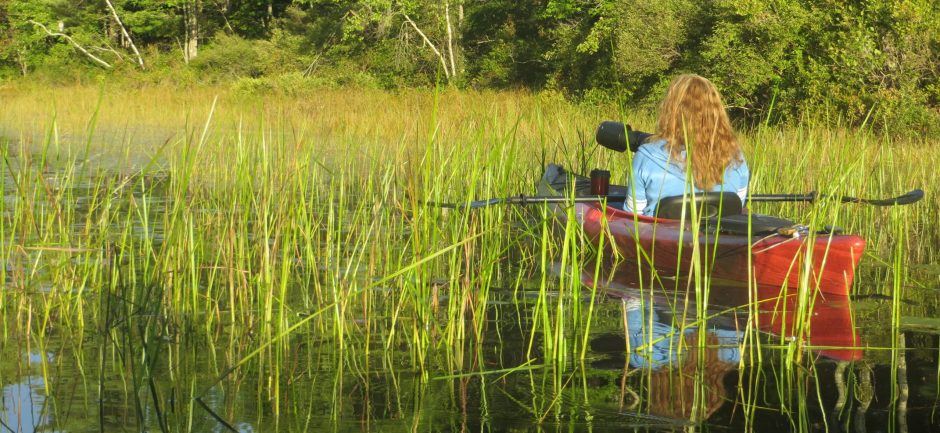Oh, it’s been so very long since I posted! And I apologize, dear reader. You see, Book 4, Mystery of the Bear Cub has been the hardest of all of Cooper’s adventures to write. I absolutely love the content: Black Bears, the evils of trash dumping, and kids making a difference. But when you write a series, the trick is to keep each book different enough to be interesting and the mystery a surprise, yet you want it to have some of the same content so you feel as if you’re curling up with a best friend. Right this minute, Mystery of the Bear Cub is with my editor and a Black Bear expert! I’m so very lucky to have the advice of Melissa Kim and and Deborah Perkins as we put the final touches on this one.
Whenever I get stuck, I find myself doing one of two things: One, stand in front of the food cupboard and nibble as I think. Or two, take a walk around the campground property. Those of you who know me best, know I take my camera everywhere I go. And I’ve caught some pretty interesting wildlife on the move lately!
When I go to school visits, I’m always asked what my favorite animal is . . . that’s like asking who my favorite child is! I can’t choose. But this otter had me fascinated for most of the winter. I devised ways to get closer and closer still to his fishing hole.
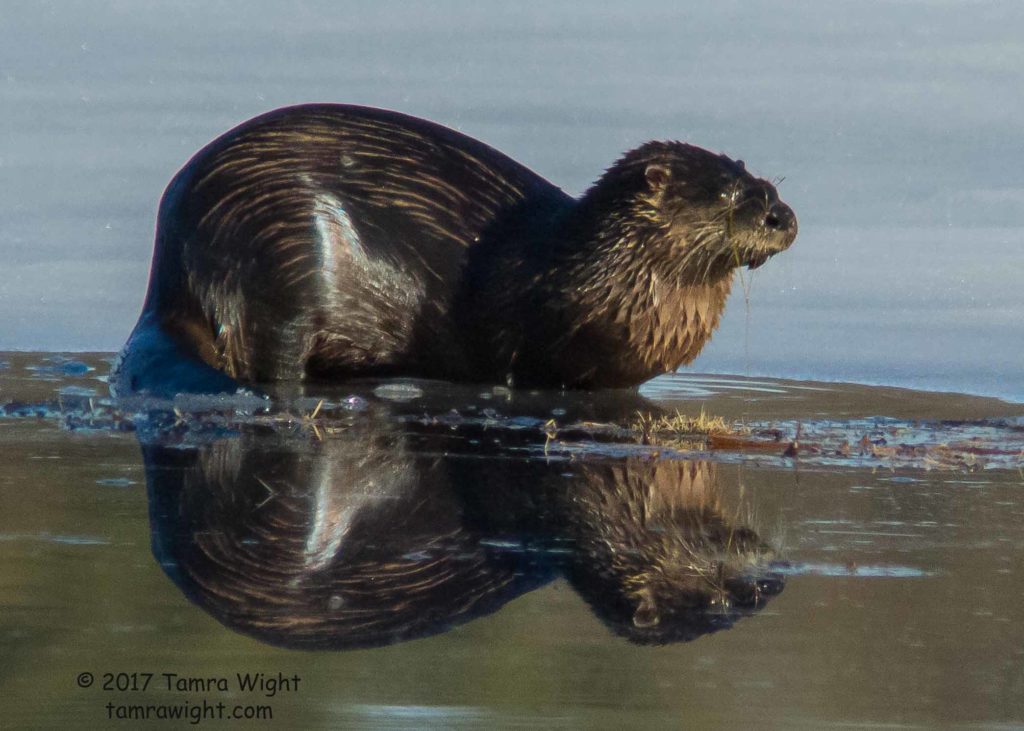
If anyone had watched me stalking this otter, they would have giggled at me. We have a long skinny piece of shoreline that juts out into the lake. It’s a piece of old cart road, before Route 26 was built. It’s really only a footpath wide. If I knew he was out there on the ice, as I reached the beginning of this section of path, I’d take off my squeaky snowshoes and wait.
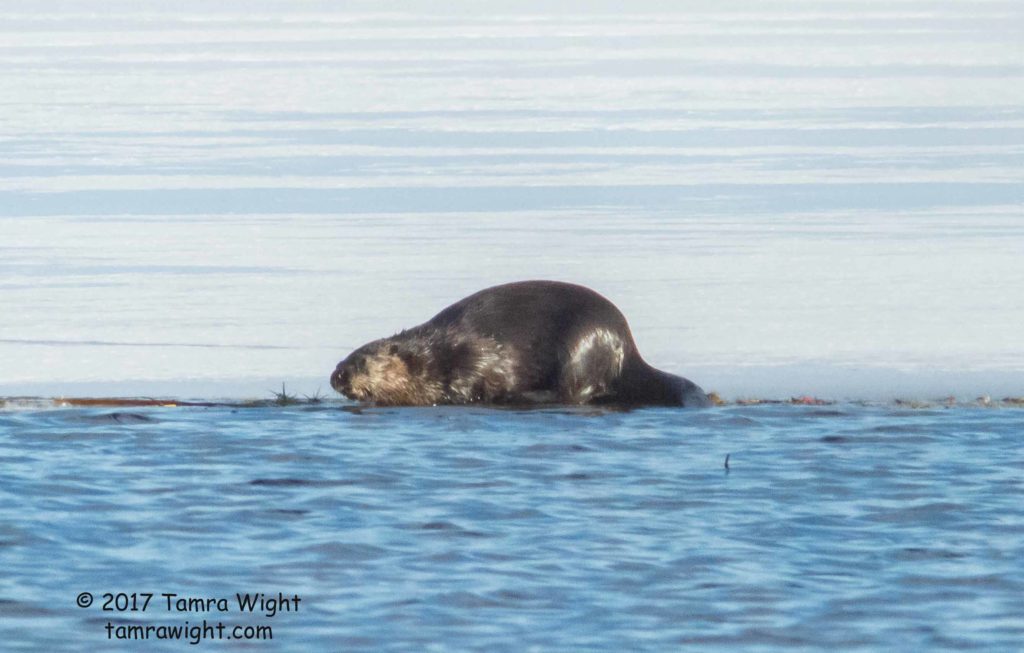
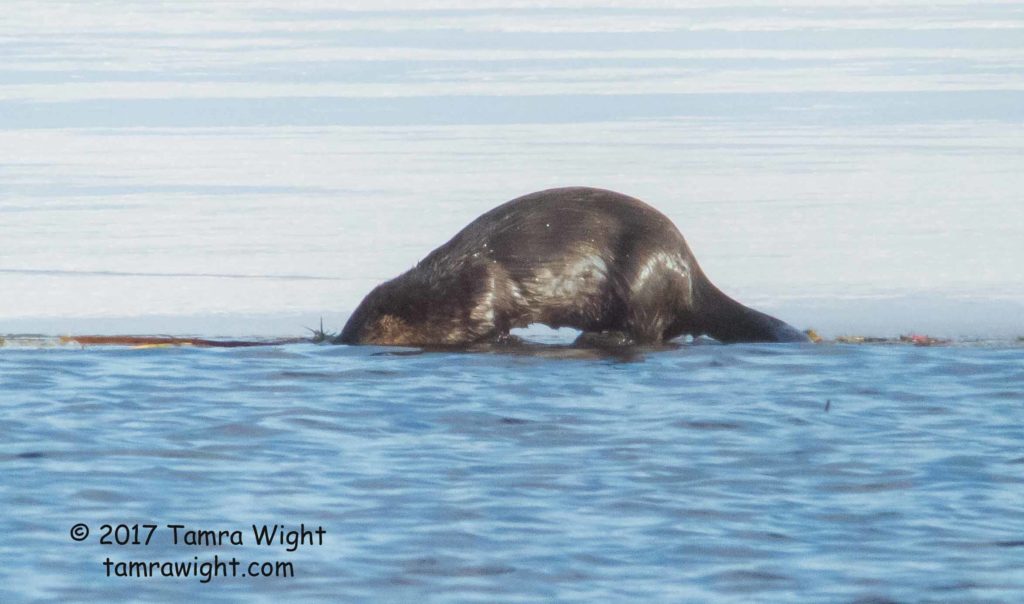
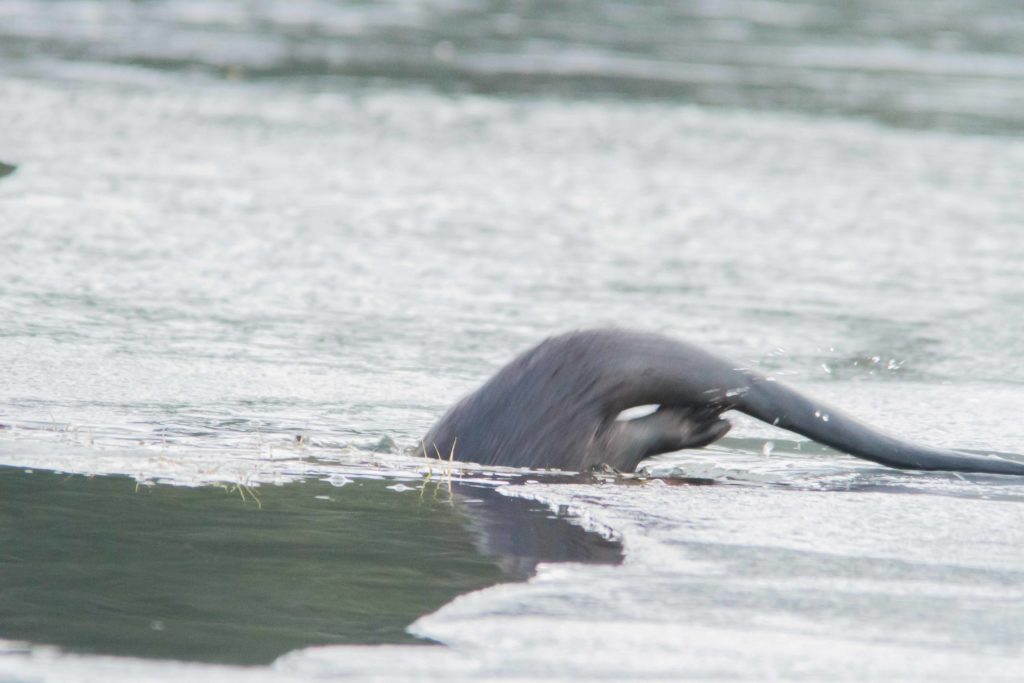
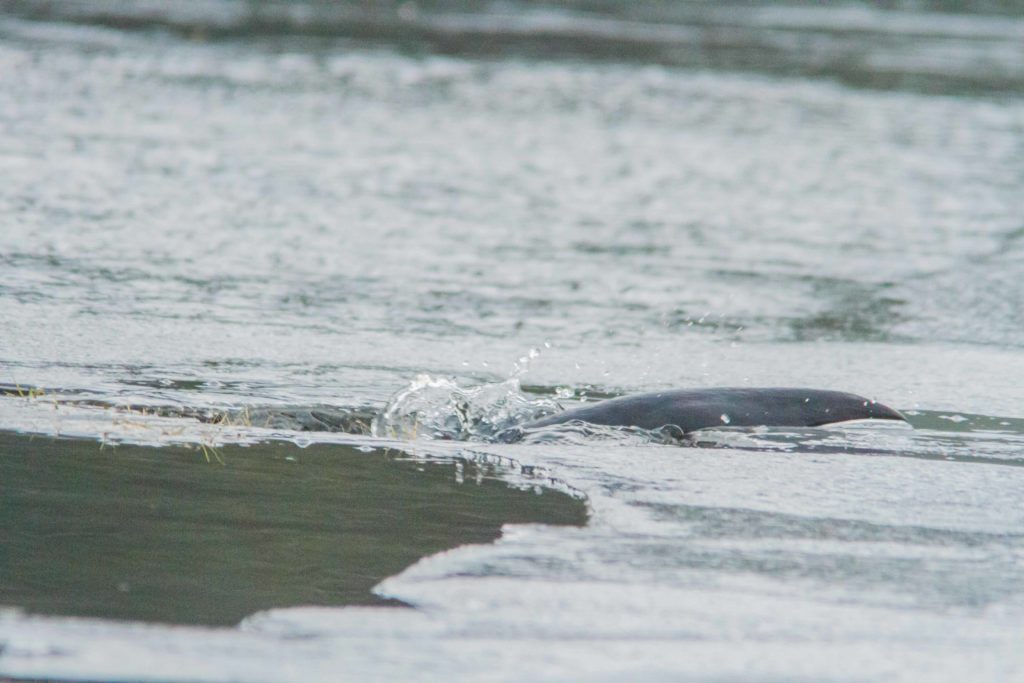
The minute he slipped into the water after his next meal, I’d walk closer and closer still. When he popped out again, I’d freeze.
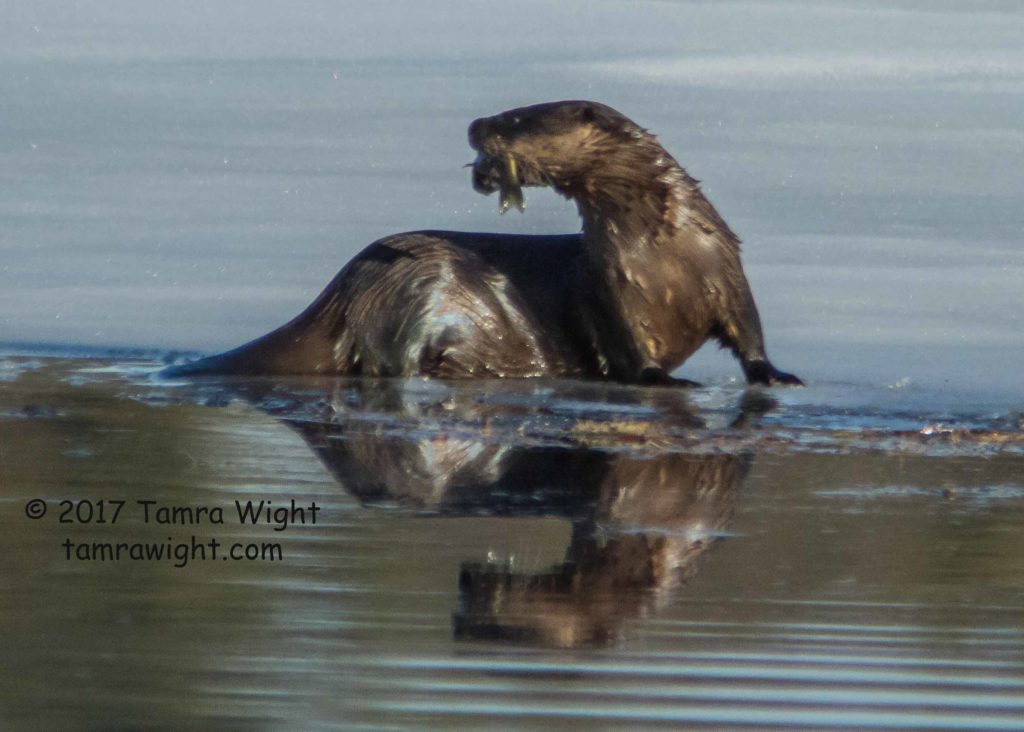
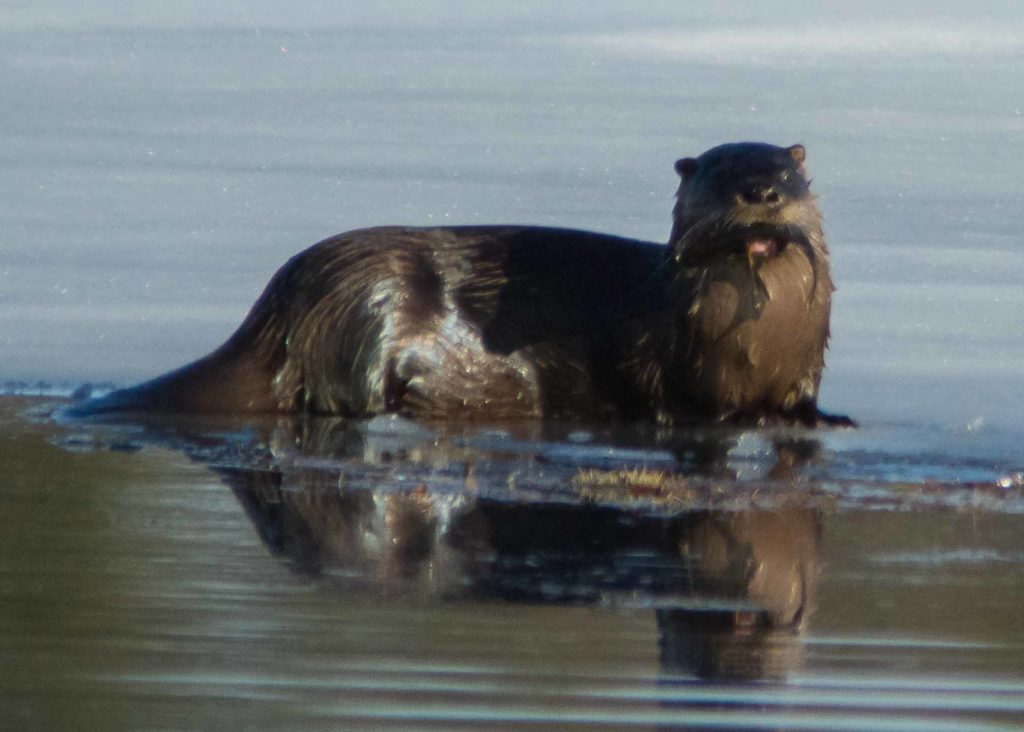
Otters have very good hearing, but their eyesight is not so good. So as long as I stood still, he would stay fishing. If I moved too much, or too close, he’d dive in and slip away, never to return again that day.
Up to this point, I had only gotten interesting, but dark and grainy photos because of the distance. I longed for close ups. Crisp photos with lots of detail. So I decided to add the extension to my camera lens, and lug down my cloak of invisibility, which is no small feat . . . it’s heavy!
Using my stop and go technique, I got as close as I dared. Finally, when he dove again, I raced forward to a spot closer to his favorite hole in the ice, where I could stand behind some bushes. Then I threw the cloak over me and the camera. And I waited.
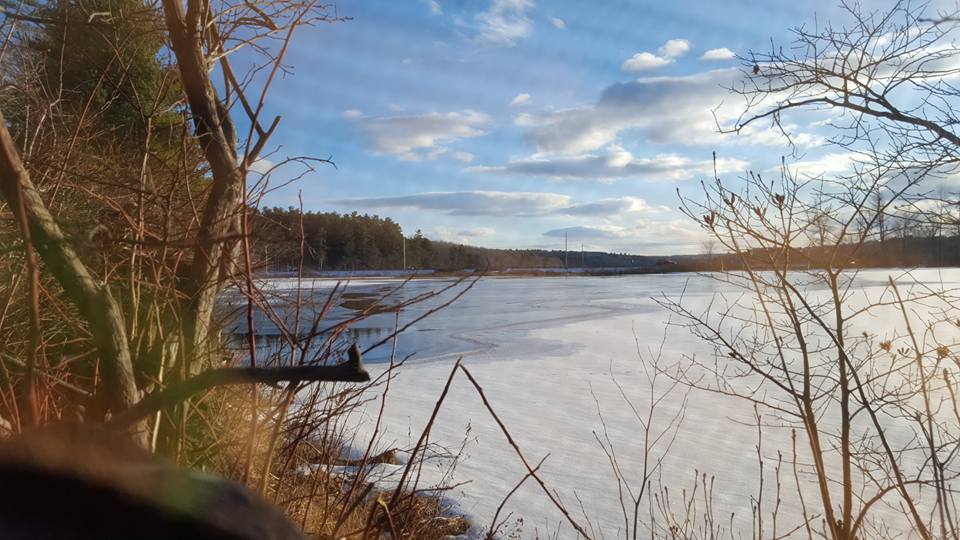
And I waited.
And I waited.
And I was rewarded!
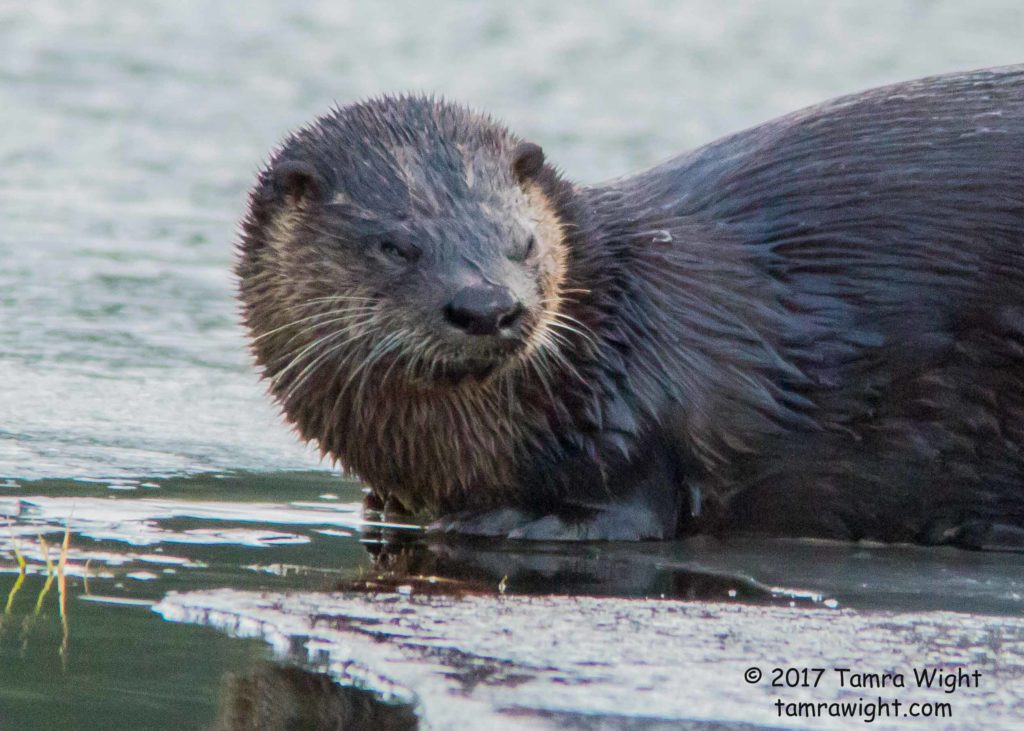
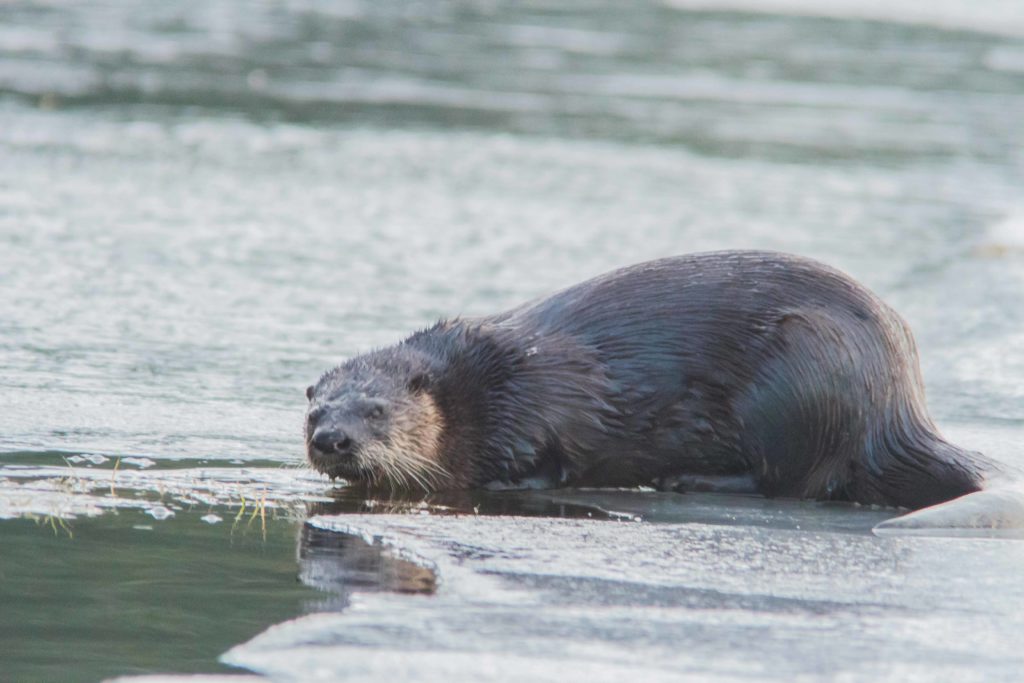
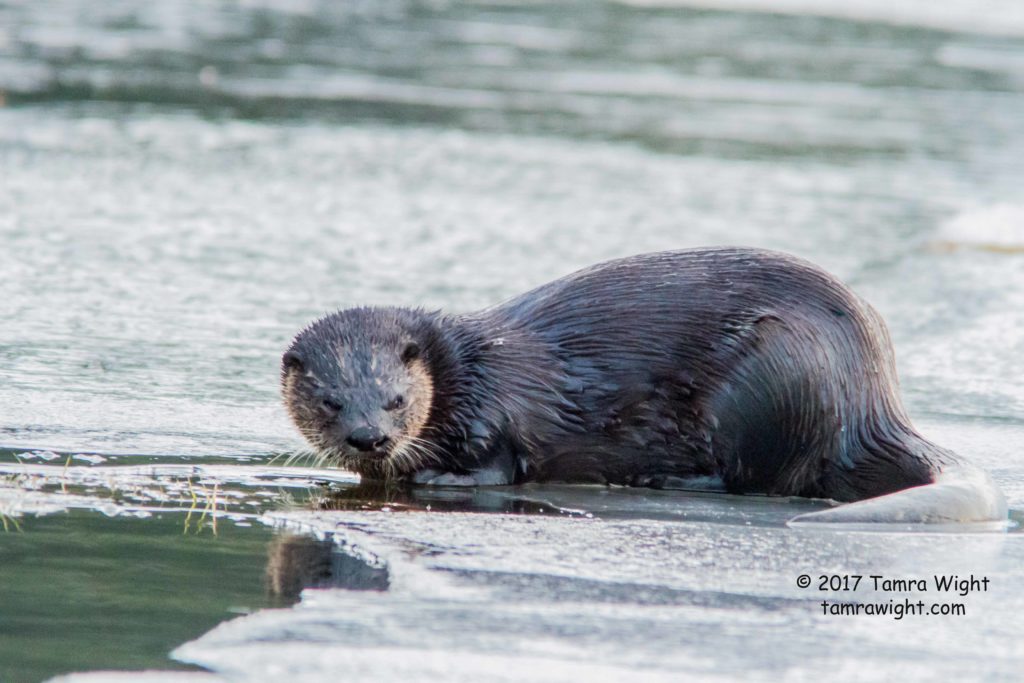
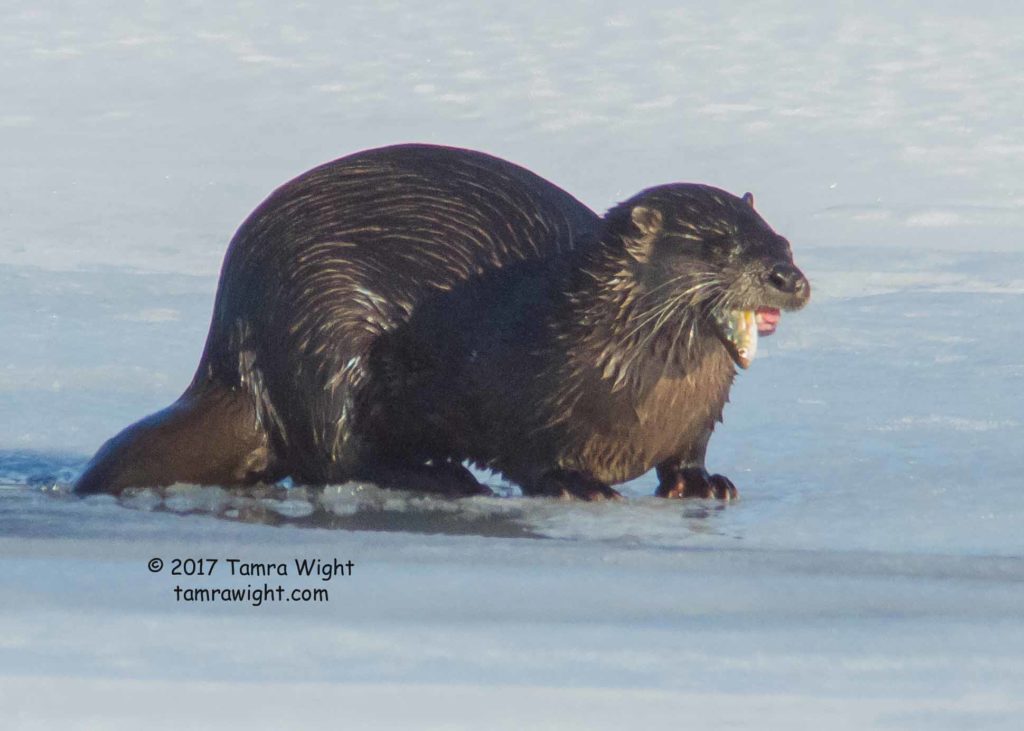
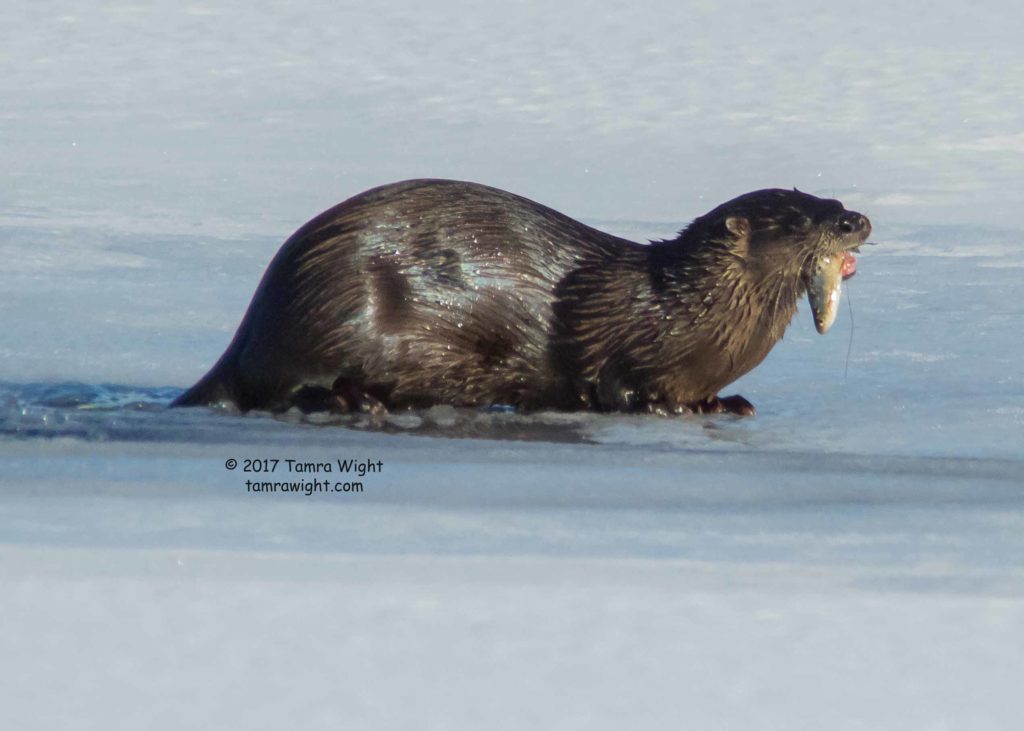
Still not as crisp as I’d like, but a little better still.
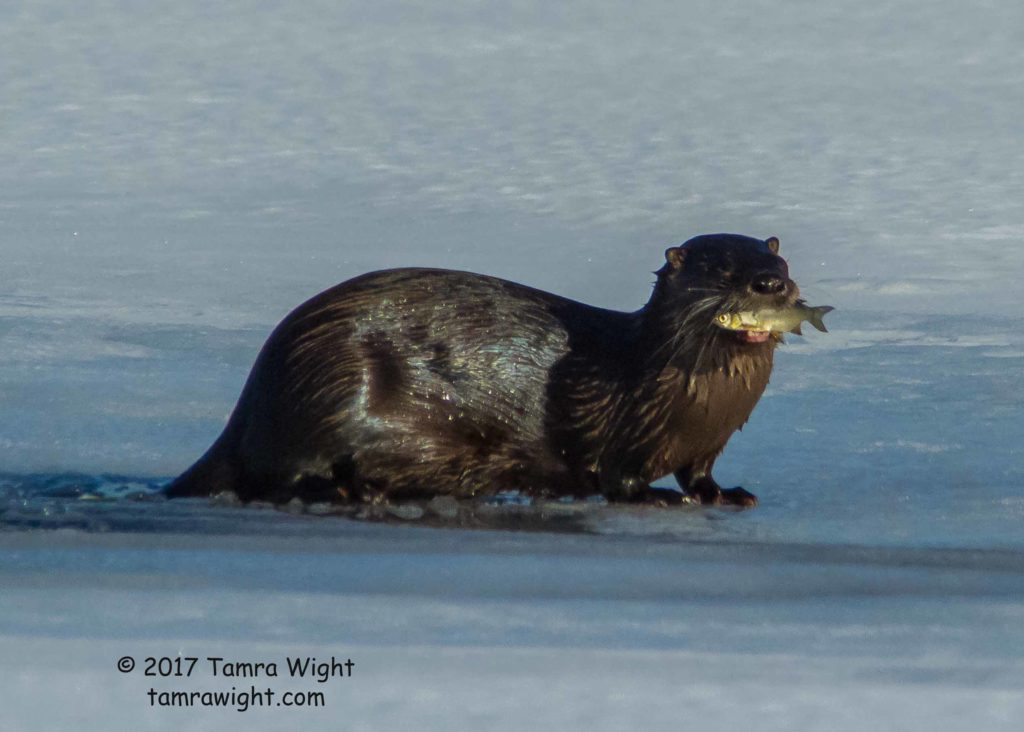
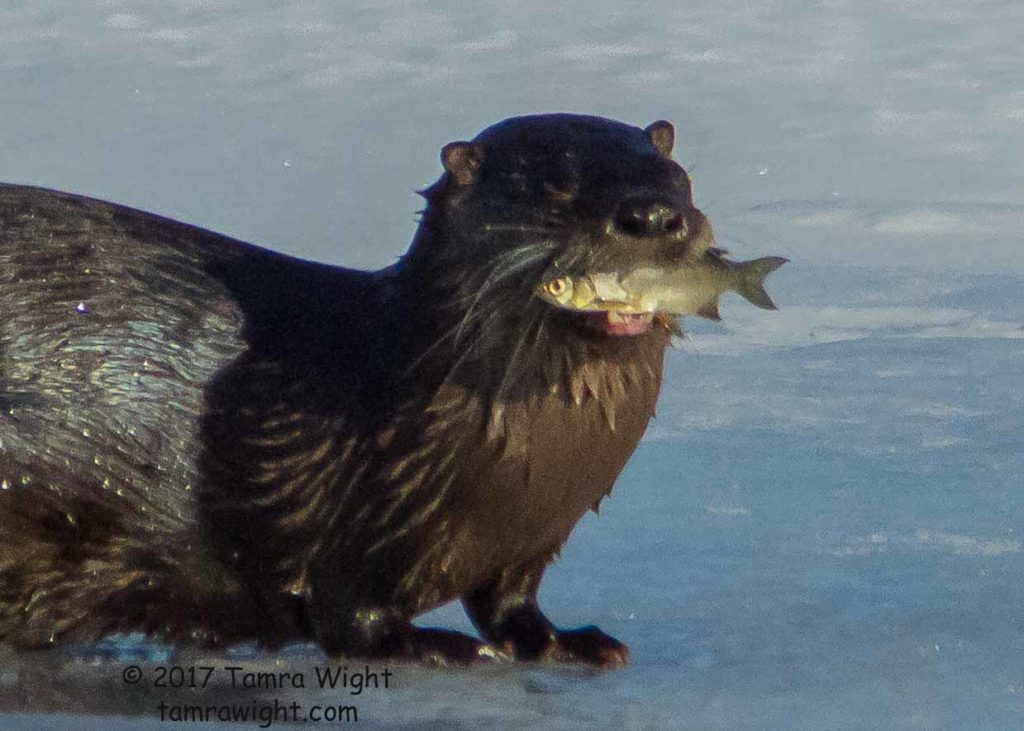
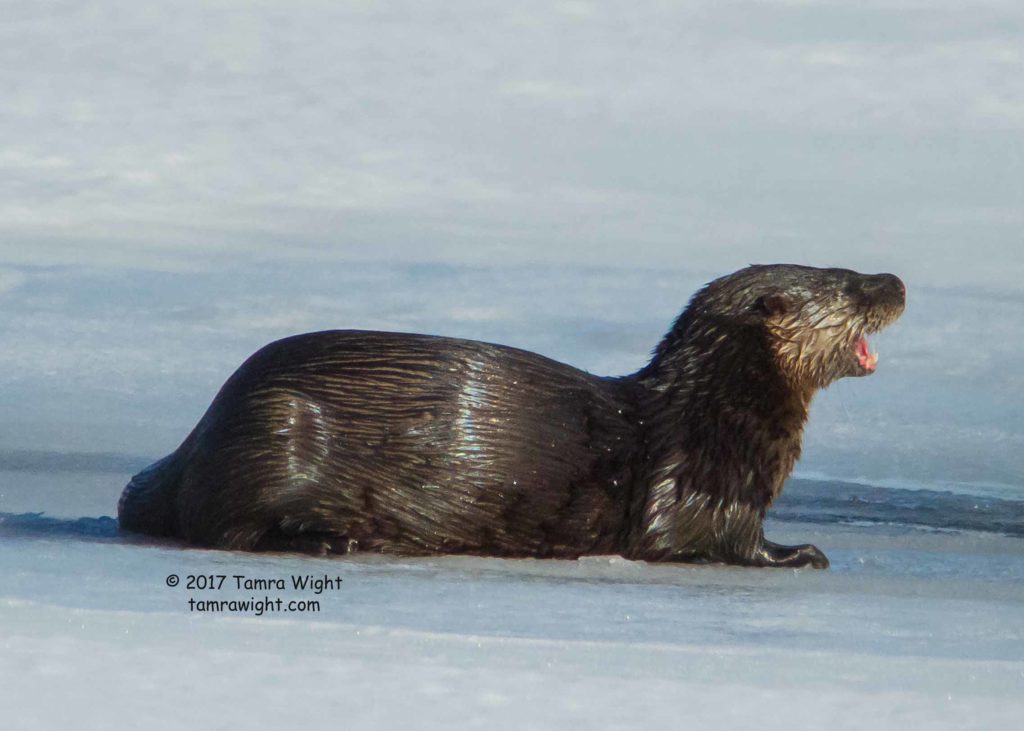
Look at this otter chow down! I swear this guy does nothing but eat! And I wondered where on earth he “puts it all” It makes sense though when you hear that its body digests food in only an hour.
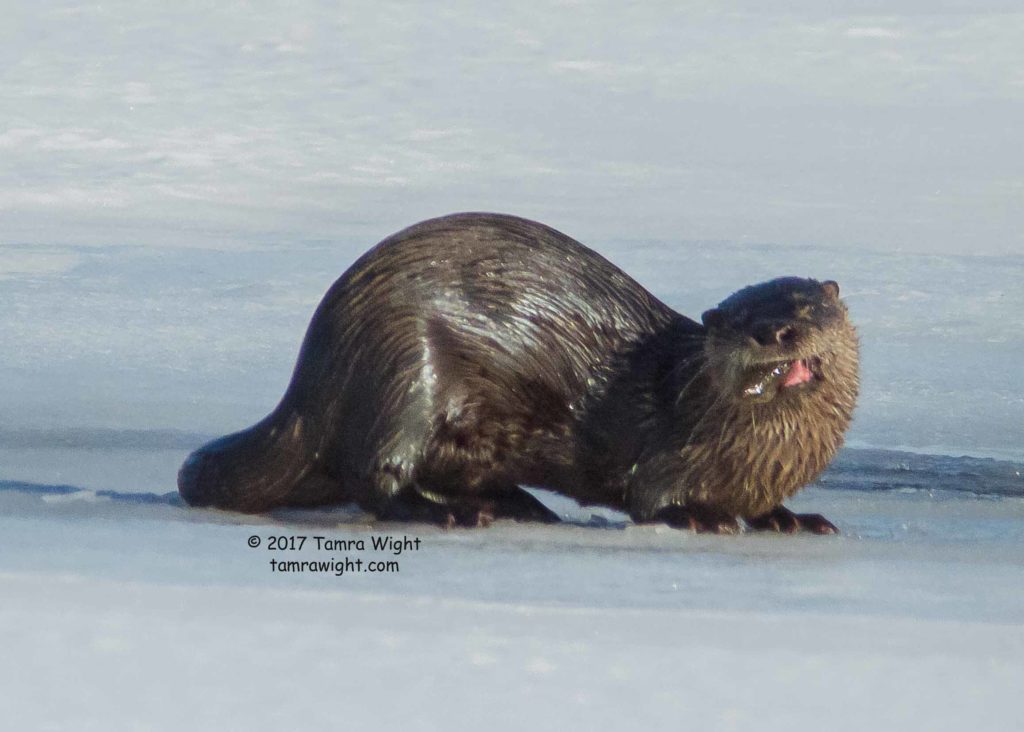
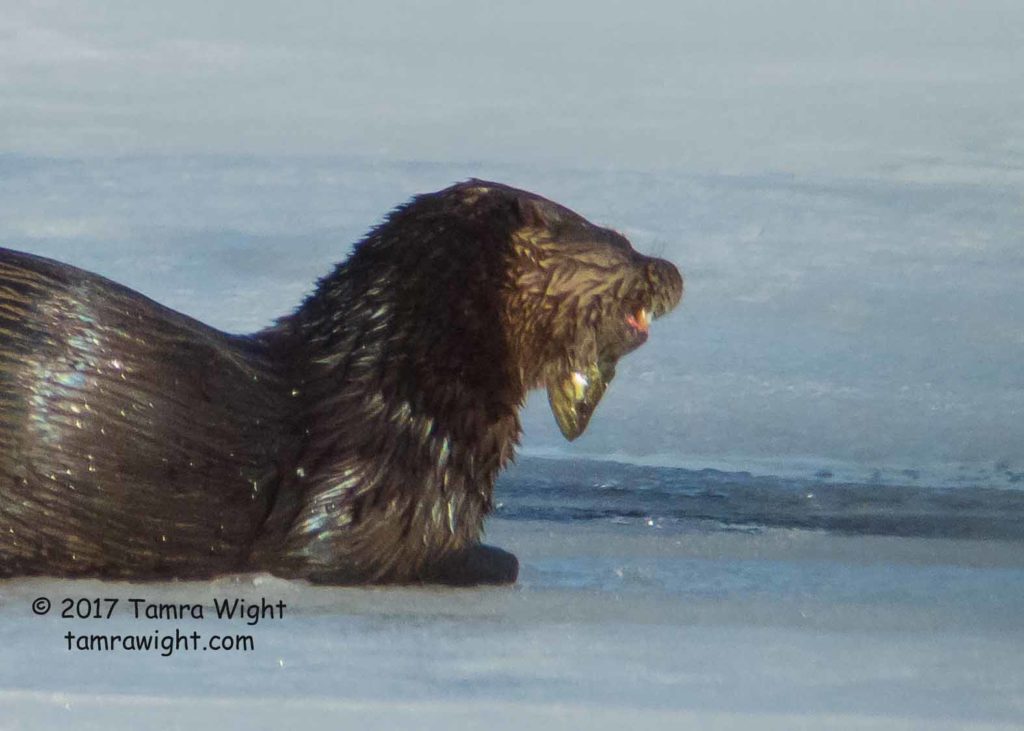
I sat there for close to two hours that day, just focusing on him. And while I still wasn’t as close as these pictures make it seem, I can use my camera lens like binoculars to observe and take note of his behaviors.
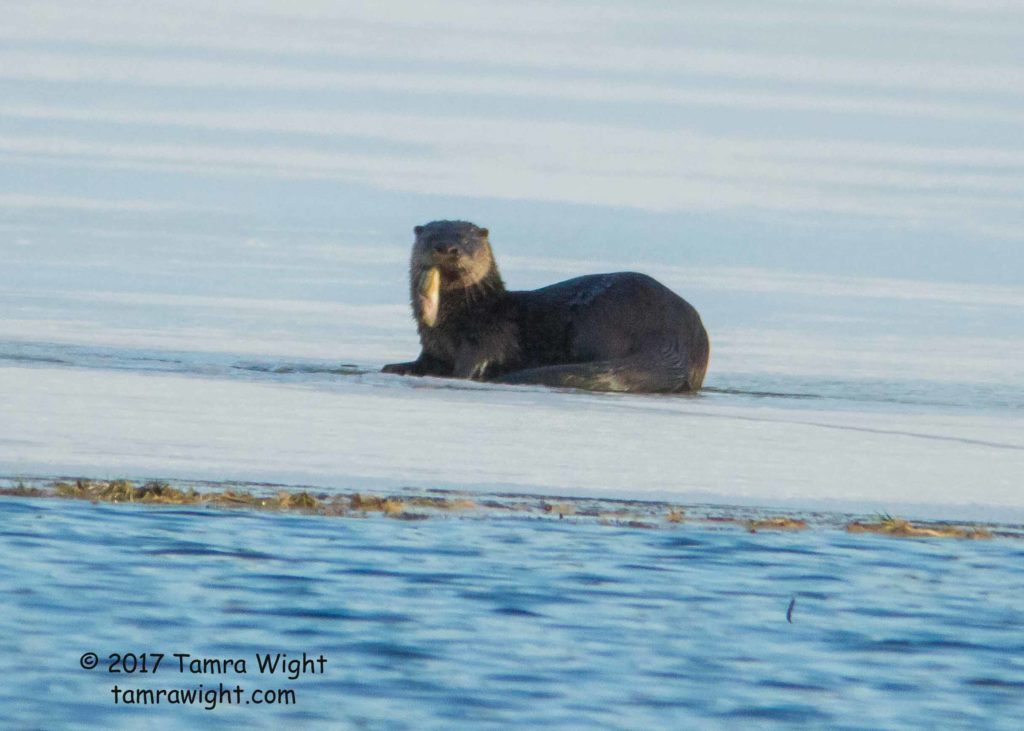
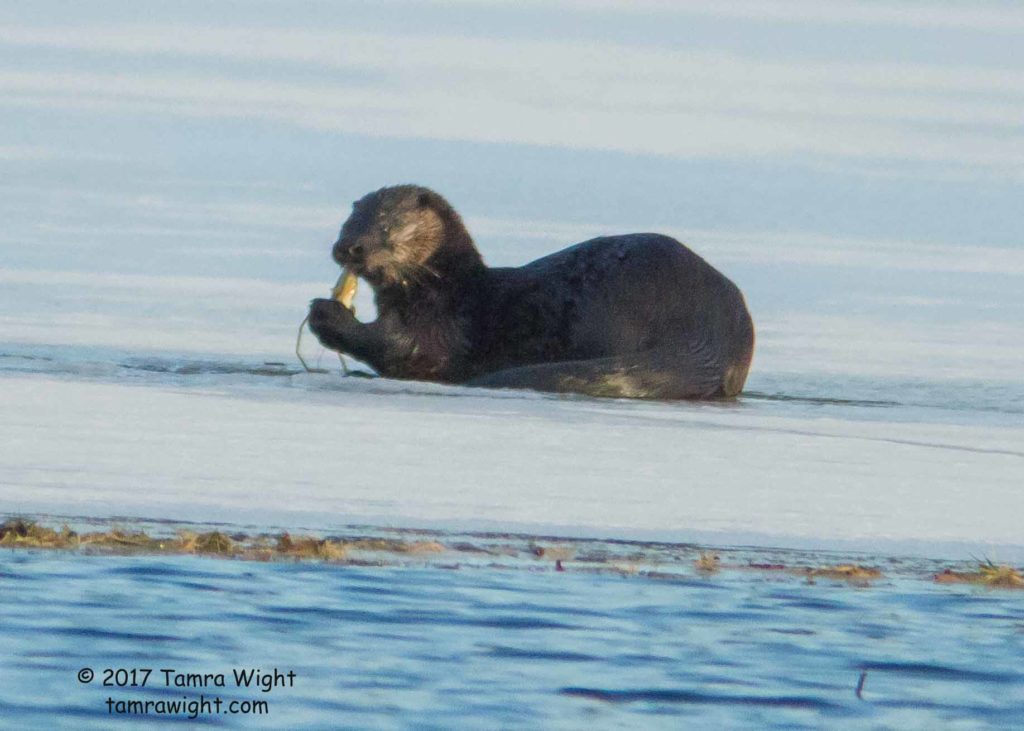
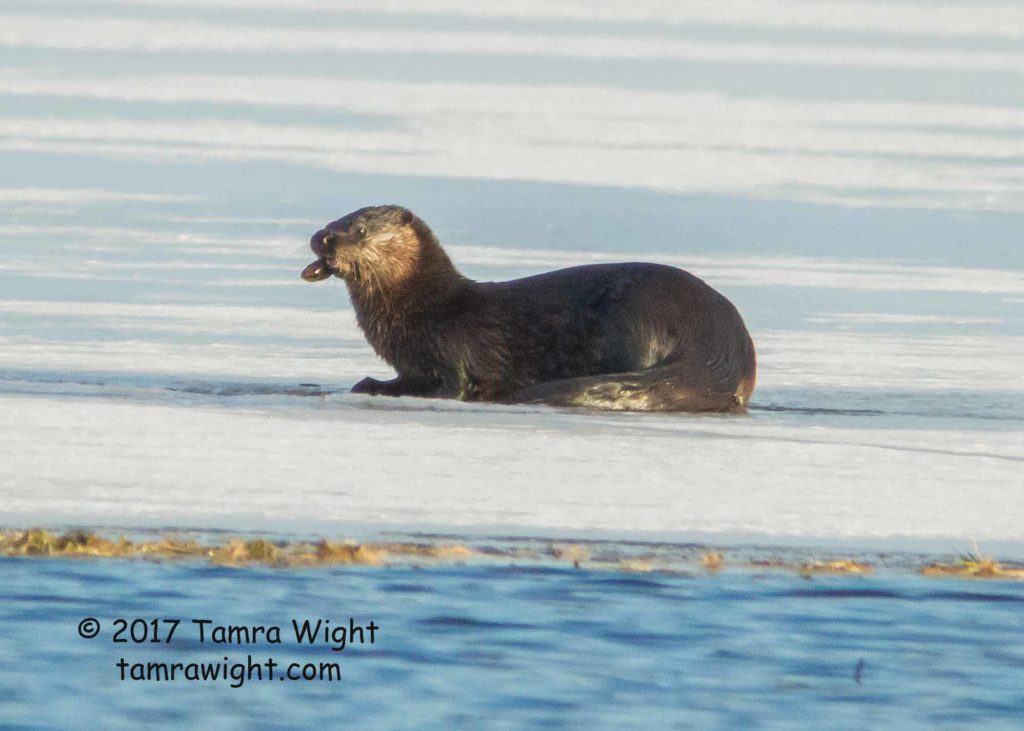
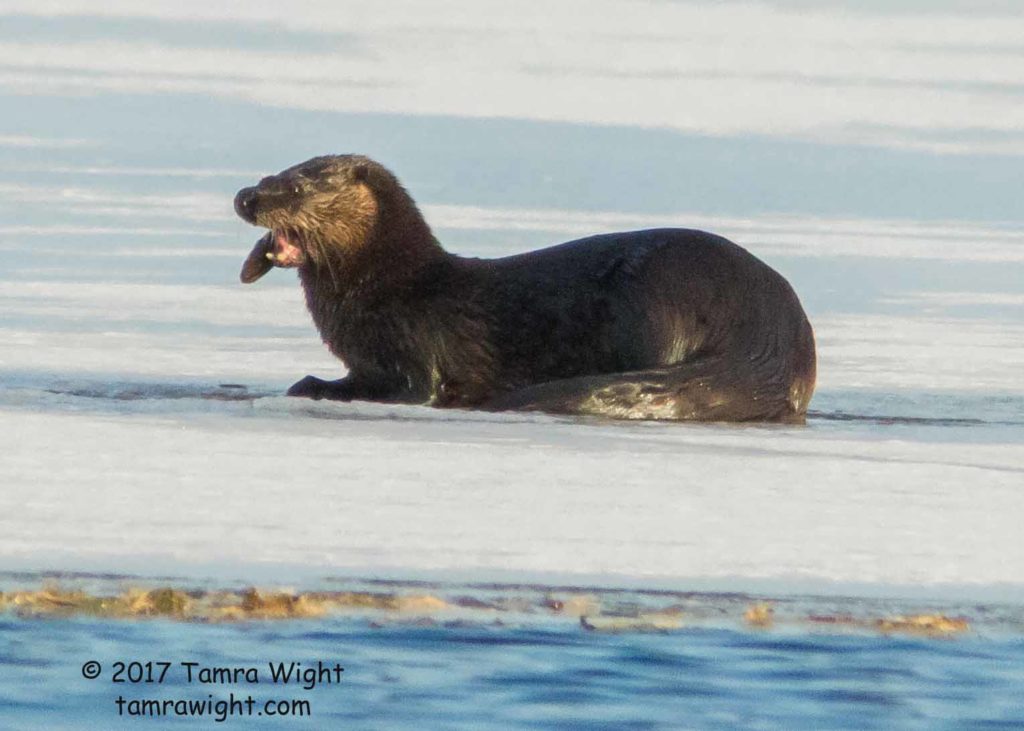
What I love most, is how he uses his front feet to hold the fish. From what I read, otters will also eat freshwater mussels, large water beetles, crabs, crayfish, bird eggs (could explain the loons eggs lost during last Spring in the first nesting), fish eggs, and small mammals (muskrats, mice, young beavers). So far, I’ve only seen them eat fish. Lots and lots of fish.
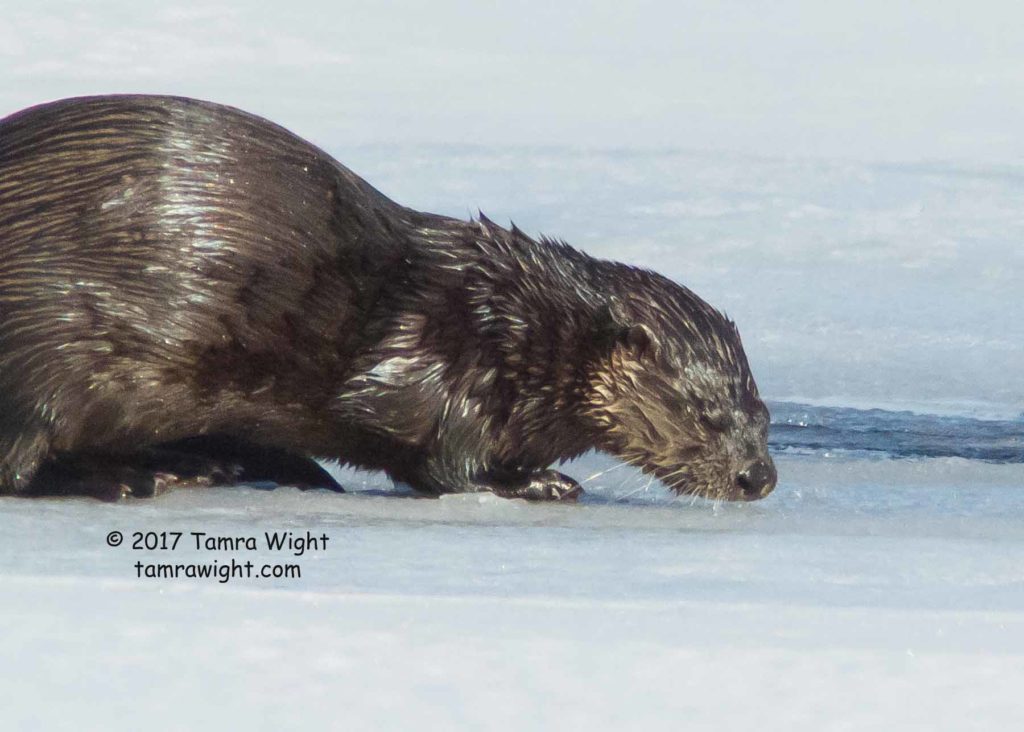
Now that the little patch of open water has grown, he doesn’t show up like he used to. But I’m content with research I gained, and those lovely hours of solitude by the edge of the wintering lake.
You can be sure, he’ll end up in a book sometime.
